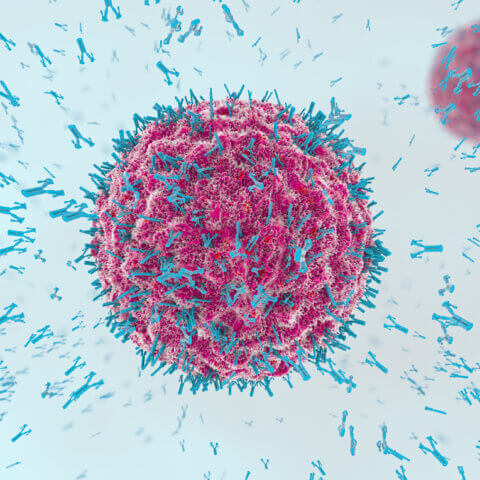Last Updated: March 3, 2025, 12 pm UTC
Epilepsy is the fourth most common neurological disorder in the world1, affecting over 68 million people globally, and approximately 2.2 million people in the US2. In pediatric populations, it is estimated that about 470,000 US children under the age of 14 have epilepsy1. However, developing anti-seizure medications for pediatric patients has long been a challenge due to ethical concerns, recruitment barriers, and the limited number of eligible patients.
Recognizing that the fundamental mechanisms of partial onset seizures (POS) are similar across age groups, the FDA established the guidance, Drugs for Treatment of Partial Onset Seizures: Extrapolation of Efficacy from Adults to Pediatric Patients 1 Month of Age and Older. In this blog post, we discuss the key components of the guidance and the impact it has on streamlining the approval process for pediatric patients.
Regulatory background: Addressing a critical need
Historically, the FDA, based on the US Federal Food, Drug and Cosmetic Act, required sponsors to establish efficacy for the treatment of POS in pediatric patients by performing one or more adequate and well-controlled clinical studies in pediatric patients using doses adjusted based on body weight and age. This was due to the lack of evidence supporting extrapolation of efficacy and safety information obtained in adult patients to pediatric patients.
In the new guidance, however, the FDA describes an approach where efficacy can be extrapolated from adults to pediatric patients when it is reasonable to assume that children, compared with adults, have a similar:
- Progression of disease,
- Response to treatment; and,
- Exposure-response relationship.
The FDA developed this innovative extrapolation approach after conducting systematic and quantitative analyses of historical clinical data on drugs with various mechanisms of action approved for treating POS in both adults and pediatric patients. The findings revealed a consistent relationship between drug exposure and response (reduction in seizure frequency) across age groups, extending to pediatric patients as young as 1 month old due to their phenomenological and pathophysiological similarity. This evidence allowed the FDA to conclude that the efficacy of drugs approved for the treatment of POS can be reliably extrapolated from adults to pediatric patients.
Other regulatory approaches
It is worth noting that the European Medicines Agency (EMA) has also established guidelines that allow for the extrapolation of efficacy data from adults to pediatric patients in the treatment of POS. Like the FDA guidance, the EMA’s “Reflection Paper on the Use of Extrapolation in the Development of Medicines for Paediatrics” outlines a framework for extrapolating efficacy and safety data from adults to children. However, the EMA’s extrapolation policy applies to children aged 4 years and older4, versus the FDA’s recommendation of patients as young as 1 month old.
Both agencies aim to facilitate the availability of effective treatments for pediatric patients by reducing the need for extensive efficacy trials in children, focusing instead on safety and pharmacokinetic assessments.
Applications of the FDA guidance in POS drug development
Formulation development
Developing drugs for children presents unique formulation challenges compared to those for adults. It is important to create age-appropriate formulations tailored to different pediatric age groups. This includes developing child-friendly dosage forms that ensure palatability, ease of administration, and precise dose delivery.
Efficacy considerations
Since the FDA’s efficacy extrapolation conclusion applies only to partial-onset seizures (POS), sponsors may consider using validated exposure-response models (e.g., PK/PD models) to predict drug concentrations and treatment response (such as seizure reduction) for other types of seizures. These models utilize virtual patient populations to support efficacy extrapolation in pediatric patients.
Clinical pharmacology and dosing
To support extrapolation, sponsors should collect blood concentrations of active drugs and metabolites in an adequately designed pharmacokinetic and tolerability study in patients 1 month to 16 years of age. These studies are designed to characterize acute tolerability over a range of doses that covers drug concentrations known to be effective in adults.
Importantly, pharmacokinetic simulations should be performed to aid in the selection of doses expected to achieve therapeutic exposures similar to adult exposures. Sponsors should discuss simulation results with the FDA before initiating safety studies.
Safety
The FDA expects sponsors to conduct clinical trials to assess the safety of the drug in pediatric patients aged 1 month and older with partial onset seizures, ensuring that all age groups are adequately represented. These studies may be open-label, with a minimum of 100 pediatric patients exposed to the drug for at least 6 months. Dosing levels in safety studies should match those found to be effective in the pediatric population based on extrapolation methods using adult drug exposures, as outlined in the guidance. Dose selection and optimization can be done by simulating proposed doses using the validated exposure-response model.
Looking ahead
The FDA’s decision to allow efficacy extrapolation marks a pivotal moment in pediatric seizure treatment. By eliminating the need for separate pediatric efficacy trials, the approval process for anti-seizure medications can be accelerated, allowing young patients to access new treatments sooner. This shift in focus also ensures that while medications reach the market more quickly, they remain both effective and safe for children.
Further, removing the requirement for large-scale efficacy trials in young children addresses ethical and logistical challenges. It reduces concerns associated with recruiting pediatric participants for placebo-controlled studies, making pediatric drug research more feasible and patient-friendly.
Premier Research has extensive experience in supporting the development of exposure-response models, optimizing the pathway to a safe and efficacious dose, and conducting clinical trials in the epilepsy space. For support with your program, contact us.
About Premier Research:
Premier Research, a global clinical research, product development, and consulting company, is dedicated to helping innovators transform life-changing ideas and breakthrough science into new medical treatments. We offer strategic solutions across the entire development lifecycle, from pre-clinical through commercialization, specializing in smart study design and full-service clinical trial management.
Leveraging technology and therapeutic expertise, we deliver clean, conclusive data with a focus on reducing development timelines, securing access to the right patients, and effectively navigating global regulations to ensure submission-ready results.
As an organization that puts patients first, we pride ourselves on helping customers answer the unmet needs of patients across a broad range of medical conditions. Visit premier-research.com.
[1] Epilepsy Foundation, https://www.epilepsy.com
[2] NIH, National Library of Medicine, Partial Epilepsy – StatPearls – NCBI Bookshelf
[3] NIH, National Library of Medicine, Epilepsy and Seizures | National Institute of Neurological Disorders and Stroke
[4] EMA,2016. Reflection paper on extrapolation of efficacy and safety in pediatric medicine development https://www.ema.europa.eu/en/extrapolation-efficacy-safety-paediatric-medicine-development-scientific-guideline

 Webinar
Webinar 


 Perspectives Blog
Perspectives Blog 